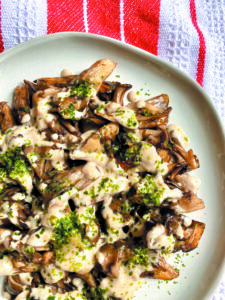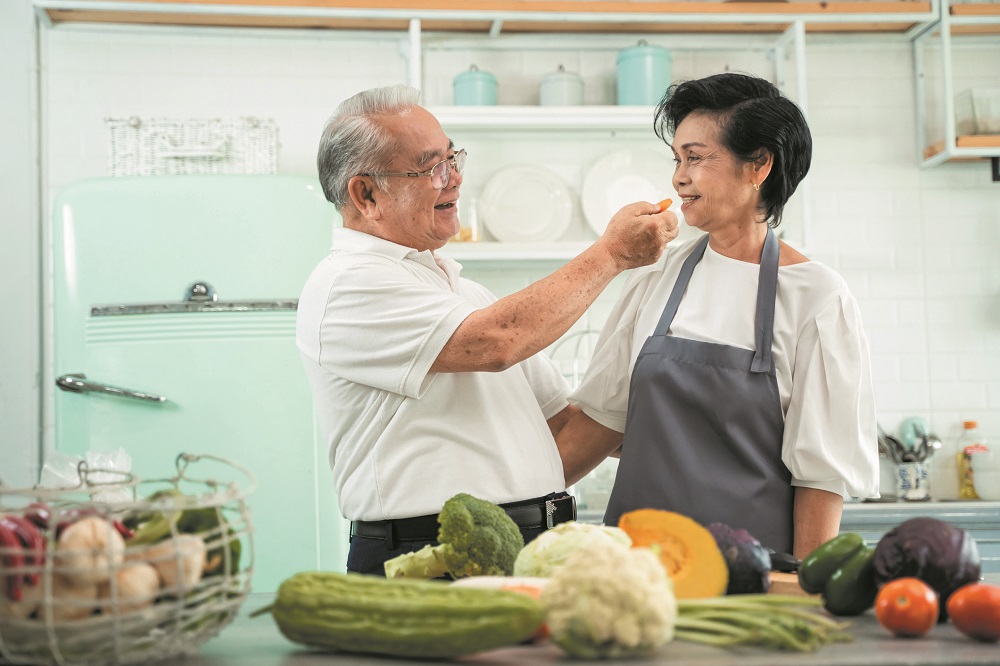People in Japan live an average of 85 years, longer than people in any other large country. Those long life spans aren’t purely a product of good genetics—when Japanese people live in the continental US, their rates of coronary heart disease shoot up and their life spans get shorter, according to a study by researchers at University of California, Berkeley.
One key to their longevity is almost certainly the Japanese diet. People in Japan consume less red meat and sugar than people in other countries. That contributes to Japan’s low rates of obesity, diabetes and heart disease. But avoiding unhealthful foods is only half of the advantage—the other half is consuming healthful foods, including some that are uncommon in the US.
You might think that the best way to benefit from healthful Japanese food is to dine at Japanese restaurants—but you would be wrong. Sushi dominates the menu at many of these restaurants, and while it does include some healthful components, it isn’t particularly healthful overall—sushi rice has a lot of added sugar. For most Japanese people, sushi is an occasional treat, not a diet staple.
Here are six healthful ingredients common in Japan that are worth adding to meals to help increase your life span. Many are available in grocery and health-food stores, Asian markets and online.
Miso, a paste made primarily from fermented soybeans or sometimes another type of bean, often is used to make miso soup, but it also can be used in stir-fries, marinades, glazes and salad dressings. Miso soothes gastrointestinal issues and boosts immune response—like many fermented foods, it’s rich in probiotics, which contribute to good gut health. Example: A study by Japan’s National Defense Medical College found that a yeast isolated from miso reduced inflammatory bowel disease symptoms.
The soybeans used to make miso are an excellent source of vitamin K, manganese, copper and zinc. Several studies, including one by Japan’s National Cardiovascular Center, have linked soybean consumption to reduced risk for heart disease. Other studies, including one by researchers at Korea’s Gachon University, have identified links between eating soybeans and lower risk for various cancers including stomach cancer.
Daikon radish. This looks like an oversized white carrot. Its flavor is milder than the radish varieties common in the US, which makes it a versatile ingredient—it can be sliced thin and eaten raw in salads…pickled and used as a condiment…or boiled in soups and stews.
Daikon is low in calories but rich in dietary fiber, so eating this radish makes you feel full without adding to your waistline. It is high in folate, potassium, magnesium, vitamin C and omega-3 fatty acids, and they’re helpful for people who suffer from acid reflux because the mustard oil in daikon neutralizes stomach acid. In Japan, daikon is believed to have detoxification properties, and a study by the UK’s University of Surrey supports this. Daikon has antimicrobial properties, so it’s popular during cold and flu season in Japan. Several academic studies have confirmed that there are compounds in all radishes that appear to be antibacterial.
If you can’t find daikon in local stores, you can grow your own. Seeds are available online, and it is easy to grow. It prefers cool weather and matures in just 50 to 60 days from seed, so it’s best to plant in late summer/early fall or in early/mid spring in most parts of the US.

Seaweed, used to make sushi, also can be chopped into small pieces and added to salads, soups, noodle dishes and other meals. Dried seaweed can be eaten on its own as a snack. Seaweed is an excellent source of healthful antioxidants. Example: A carotenoid called fucoxanthin found in certain edible seaweed has antioxidant and anti-inflammatory properties. According to multiple studies, including one by researchers at University of Connecticut, seaweed is linked to lower rates of a long list of major health risks, including cancer, liver disease, obesity and type 2 diabetes. A separate study by researchers at University of South Carolina concluded that seaweed consumption might be a major reason why Japanese women have relatively low rates of breast cancer. In Japan, seaweed is believed to restore energy—the seaweed soup miyeok guk is traditionally consumed by Korean women following childbirth to help them recover their strength.
Purple sweet potato is a particular favorite on the Japanese island of Okinawa—which also happens to be the part of Japan most closely associated with longevity. A study by researchers at China’s Tianjin University found that an extract from purple sweet potato extends the life spans…of fruit flies. Further research is needed to confirm that it does the same for humans. Another study by researchers at Finland’s University of Turku has found that the pigment anthocyanin found in these potatoes and other purple-tinted vegetables is associated with lower rates of diabetes and inflammation. Purple sweet potatoes are rich in vitamin A, vitamin C and antioxidants. They can be prepared and eaten much like any sweet potato, though they’re somewhat denser and require longer cook times—if baking, often 90 to 120 minutes at 350°F. They’re most likely to be available in fall and winter.

Bitter melon tastes as you would expect. It can be used in stir-fries or pickled. Removing its white seeds and pith reduces the bitterness, but the flavor still is sharp so it is best to balance it with other bold flavors. Bitter melon is considered an extremely healthful food in Japan and in certain other parts of Asia. In a lab study, researchers at Taiwan’s Tzu Chi University found that bitter melon extract can kill cancer cells—further research is needed. Bitter melon is very high in vitamin C. It is believed to be good for the liver and helps control type 2 diabetes, though more research is needed here as well.
Fish is obviously not unknown in the US, but the differences in seafood-consumption patterns between the US and Japan is stark. In Japan, the average person eats about as much fish in a year as he/she does beef and poultry combined. In the US, the average person eats more than five times as much of those meats as he does fish. The fish consumed in Japan is mostly fatty fish such as tuna, salmon, mackerel, anchovies and sardines, all of which are rich in omega-3 fats. Numerous studies have shown that omega-3s can reduce risk for heart disease, stroke and inflammation. An analysis of 20 studies by Harvard researchers concluded that eating one to two three-ounce servings of fatty fish a week reduces risk for coronary death by 36% and total mortality by 17%.
Caution: Buy fish from a highly regarded seafood market or supermarket. Poorly handled fish can cause foodborne illnesses and other health issues.
Easy Japanese Recipes
Sautéed Maitake with Tahini & Miso Dressing and Aonori
- 2 packs (7 ounces) maitake or your favorite mushrooms
- 2 Tablespoons olive oil
- 1⁄8 teaspoon salt
- Tahini Miso Dressing…
- 2 teaspoons white miso paste (or any type)
- 1 Tablespoon + 1 teaspoon water
- 3 Tablespoons tahini
- 2 teaspoons rice vinegar
- aonori flakes (seaweed flakes) as garnish (optional)
For sautéed maitake: Rinse maitake in a colander under cool water for 10 to 20 seconds, and pat dry. In a sauté pan, heat olive oil over medium-high heat. Add maitake and season with salt. Cook for five minutes on medium-high heat.
For tahini miso dressing: In a bowl, dissolve miso with water. Add tahini and vinegar, and mix well.
Place the sautéed maitake on a serving plate, and drizzle with the tahini miso dressing. Sprinkle aonori flakes on top. Makes two servings.

Gluten-Free Purple Sweet Potato & Orange Cake
- 3 cups purple sweet potato, cooked, peeled and mashed
- ¼ cup fresh orange juice
- 1 Tablespoon orange zest
- ¼ cup coconut oil
- ¾ cup coconut sugar
- 2 eggs
- 2⁄3 cup coconut flour
- 1 Tablespoon orange zest
- ½ orange, thinly sliced (peeled optional)
Preheat oven to 350°F. Grease a nine-inch round cake pan. Place the mashed sweet potatoes in a large bowl. Mix orange juice, coconut oil, coconut sugar and eggs in a separate bowl and pour the mixture over the mashed sweet potatoes. Add coconut flour, and mix well. Add orange zest, and mix well. Spoon batter into the prepared cake pan.
Arrange orange slices on top of the batter, and bake at 350°F for 40 minutes. Allow to cool completely.



